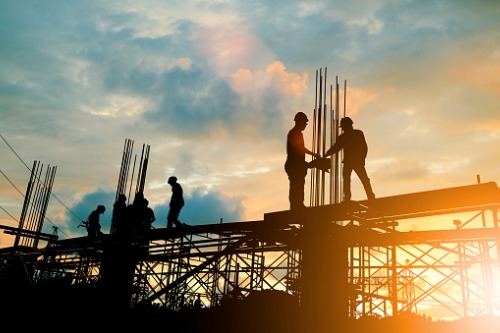

The Canadian job market bounced back in December 2019, marked by an increase of 17,000 jobs in the construction industry, with Ontario leading the job gains. The construction industry is projected to be on a steady growth trend; a report by BuildForce indicates that employment in Canada’s construction and maintenance industry is anticipated to grow by 50,200 workers by 2029.
Inverse correlation to the economy
Construction cycles don’t generally follow economic trends; in fact, the cycles can often be contradictory. In a market upswing, private investment in commercial realty, residential high-rise condos and luxury properties tends to dominate. On the other hand, in a downturn, municipal and federal governments pump money into public infrastructure. This is when public works - from road repairs to sewers and transportation improvements – are generally prioritized to prop up the economy.
“The Canadian government usually spends more per capita on construction than the US because our four seasons can have an erosive effect on our infrastructure,” notes Steve Schmelzle, the new Construction and Contracting Centre of Excellence (COE) Leader at RSA Canada. “As a result, our construction sector will almost never be stagnant. The type of construction taking place depends on the season and the state of the economy. When compared to a sector such as manufacturing, where the state of the economy can have an impact on the level of investment into product development, for instance, construction generally has a steadier foundation when it comes to premiums.”
Construction underwriting – an evolving space
Insuring construction has also changed. Until recently, construction materials were either considered non-combustible (commonly concrete and steel) or combustible (wood). Improvements in modern technology, as well as the need for greater energy efficiency, has created an evolution of construction materials. Insulated metal panels, insulated concrete forms, and pre-engineered wood are now common construction materials. Using a mix of combustible and non-combustible materials on a construction project generates a new complexity in determining fire rating under construction.
Liability is the biggest challenge
Another unique aspect of the construction industry is its complex system of contracting and subcontracting. When it comes to construction and contracting, the biggest challenge is commercial general liability (CGL). This is particularly true in light of the increasing trend of retroactive reporting of incidents after the contractor work is complete. For example, in the event of a fire, the contractor(s) who might have installed the electricals for a building upwards of eight years ago could be implicated in a damage claim years later. Liability language is evolving, with general contractors (GC) implementing language to transfer exposure generally born by the CG to the relevant sub-trades. How a project-specific wrap up liability policy interacts with a contractor’s annual CGL policy needs to be closely reviewed and understood.
“We are dealing with a few different factors here, all of which are driving up costs. First, higher claims cost for new or current claims, due to general inflation of the costs for restoration, expertise, construction materials, bodily injury and doctor fees, among others. Second, the long-tail claim trend, which is increasingly involving reporting by a lawyer. And finally, Canada is a much more litigious environment than five years ago,” says Schmelzle.
In his leadership role, Schmelzle leverages his market knowledge and technical expertise to build a best-in-class Construction and Contracting (C&C) underwriting practice at RSA.
“Our role as an insurer is to provide the expertise that our broker partners need to navigate this increasingly complex claims environment, and provide them the resources that will help them counsel their clients and ensure they have the right coverage in place for their construction projects,” he adds.
